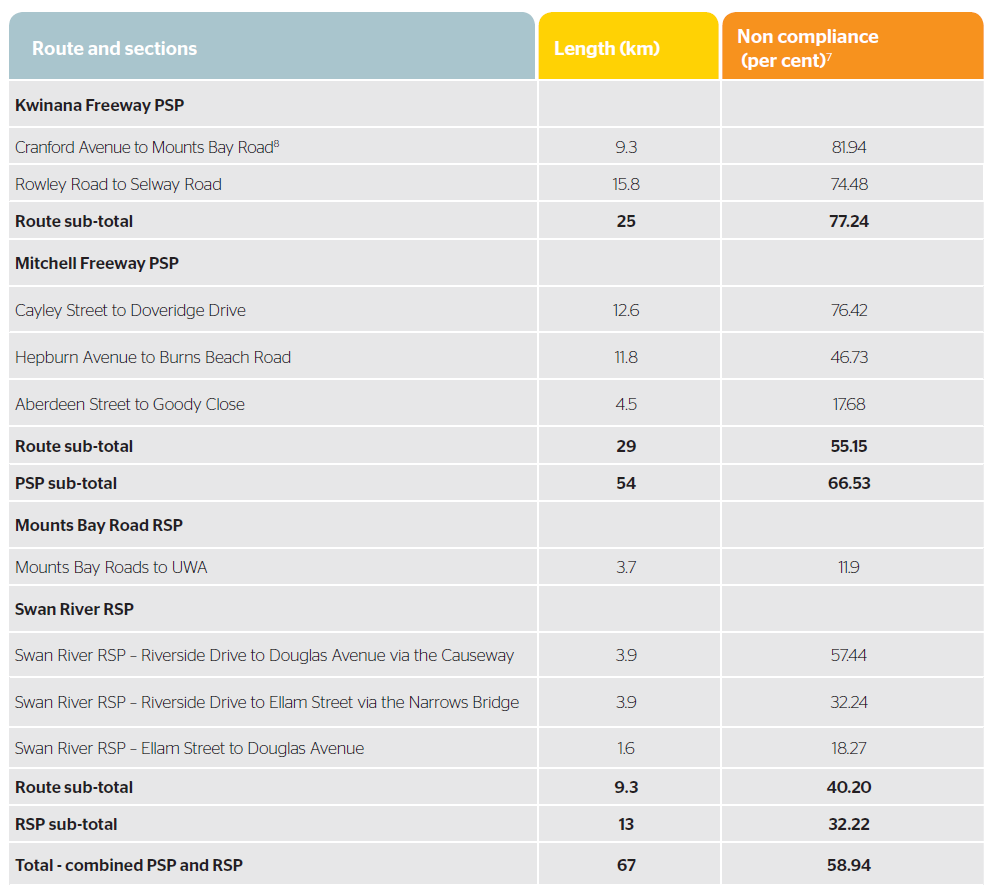Independent research commissioned by RAC has revealed almost 60 per cent of Perth’s most popular sections of shared paths do not meet Australian lighting standards.
RAC’s Shared Path Lighting Review, which examined lighting quality across 67 kilometres of the City’s most popular Principal Shared Path (PSP) and Recreational Shared Path (RSP) networks, found 77 per cent of the Kwinana Freeway PSP and 55 per cent of the Mitchell Freeway PSP do not meet relevant lighting standards.
|
Route |
Length |
Percent non-compliant |
|
Kwinana Freeway PSP |
25km |
77.24% |
|
Mitchell Freeway PSP (Aberdeen Street to Burns Beach Road) |
29km |
55.15% |
|
Swan River RSP (circulating the river between the Narrows and Causeway bridges) |
9.3km |
40.2% |
|
Mounts Bay Road RSP (Cnr Point Lewis Rotary to Winthrop Avenue) |
3.7km |
11.9% |
The Mounts Bay Road route had the highest level of compliance, with only 12 per cent of the route recorded as non-compliant.
RAC General Manager Public Policy Anne Still said the study aimed to identify opportunities to enhance the amenity and safety of Perth’s shared paths to encourage more walking and cycling.
“There are many factors which influence how easy, safe and enjoyable it is to walk and cycle, including the availability of suitable infrastructure and, for some people, separation from traffic,” Ms Still said.
“However, the importance of good quality lighting cannot be overlooked.
“In addition to considering lighting requirements during the early planning stages of new projects, it is essential to continue maintaining existing shared paths to ensure they are pleasant to use.”
A case study assessing 900 metres of the Kwinana Freeway PSP around Canning Bridge — an important area for station access and shared path connectivity — was 100 per cent non-compliant due to insufficient spill lighting from the Freeway, with the report recommending the installation of dedicated lighting at a cost of around $170,000.
“It’s concerning that much of the existing shared path network does not meet minimum lighting requirements,” Ms Still said.
“This highlights the importance of increased funding to enable ongoing maintenance and upgrades of existing infrastructure, to complement the investments being made in expanding the network”.
In addition to calling for a network-wide review and the trialling of new technologies, opportunities for low-cost ‘quick-wins’ were also identified through the study, including replacing worn globes and trimming overhanging trees.
View the full Shared Path Lighting Review on the RAC website.
<ends>
Media contact: Steph Gavlak, 0401 703 719 or media@rac.com.au
Full Breakdown – Level of non-compliance:

